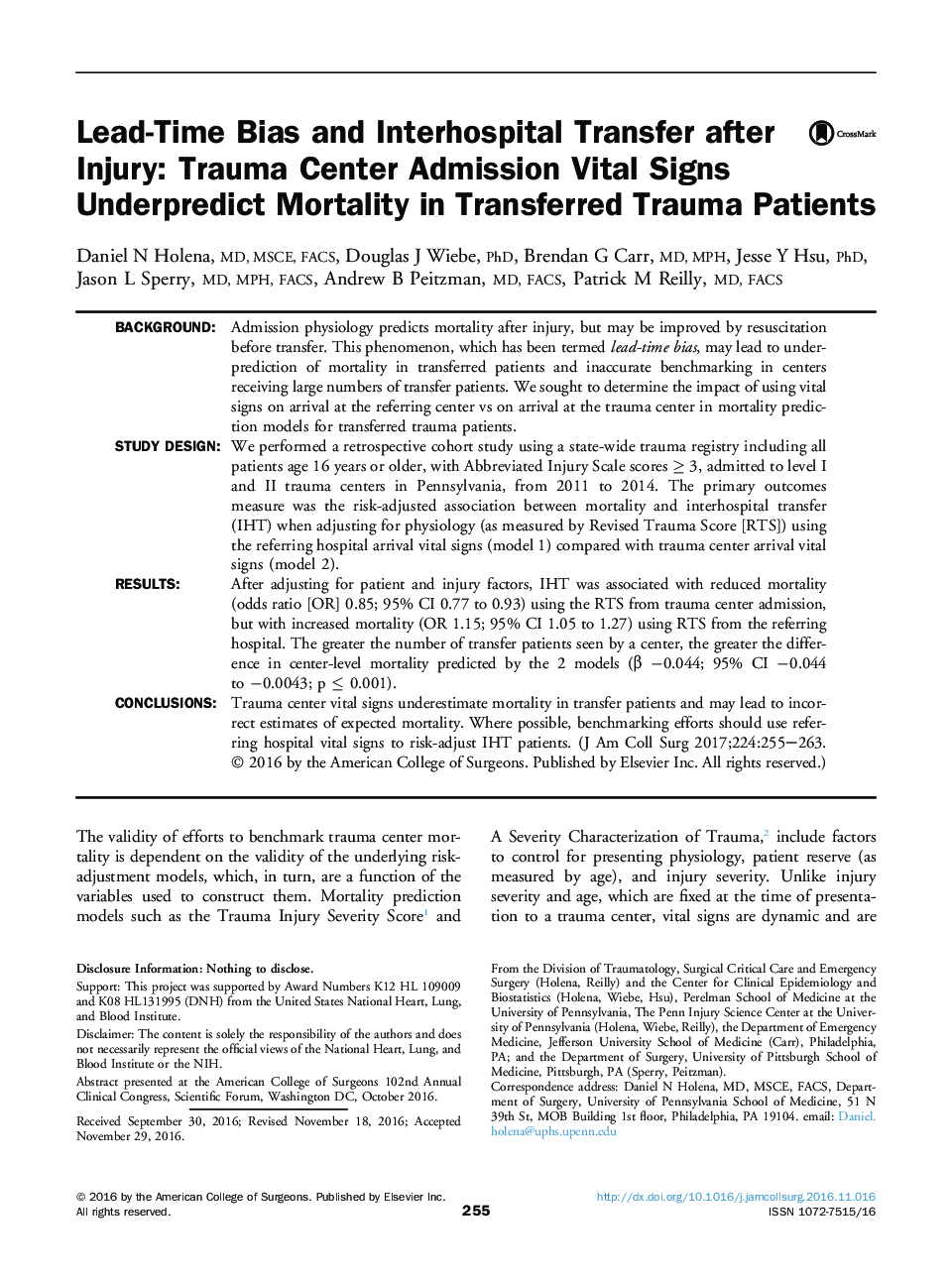| Article ID | Journal | Published Year | Pages | File Type |
|---|---|---|---|---|
| 5733138 | Journal of the American College of Surgeons | 2017 | 9 Pages |
BackgroundAdmission physiology predicts mortality after injury, but may be improved by resuscitation before transfer. This phenomenon, which has been termed lead-time bias, may lead to underprediction of mortality in transferred patients and inaccurate benchmarking in centers receiving large numbers of transfer patients. We sought to determine the impact of using vital signs on arrival at the referring center vs on arrival at the trauma center in mortality prediction models for transferred trauma patients.Study DesignWe performed a retrospective cohort study using a state-wide trauma registry including all patients age 16 years or older, with Abbreviated Injury Scale scores ⥠3, admitted to level I and II trauma centers in Pennsylvania, from 2011 to 2014. The primary outcomes measure was the risk-adjusted association between mortality and interhospital transfer (IHT) when adjusting for physiology (as measured by Revised Trauma Score [RTS]) using the referring hospital arrival vital signs (model 1) compared with trauma center arrival vital signs (model 2).ResultsAfter adjusting for patient and injury factors, IHT was associated with reduced mortality (odds ratio [OR] 0.85; 95% CI 0.77 to 0.93) using the RTS from trauma center admission, but with increased mortality (OR 1.15; 95% CI 1.05 to 1.27) using RTS from the referring hospital. The greater the number of transfer patients seen by a center, the greater the difference in center-level mortality predicted by the 2 models (β â0.044; 95% CI â0.044 to â0.0043; p ⤠0.001).ConclusionsTrauma center vital signs underestimate mortality in transfer patients and may lead to incorrect estimates of expected mortality. Where possible, benchmarking efforts should use referring hospital vital signs to risk-adjust IHT patients.
